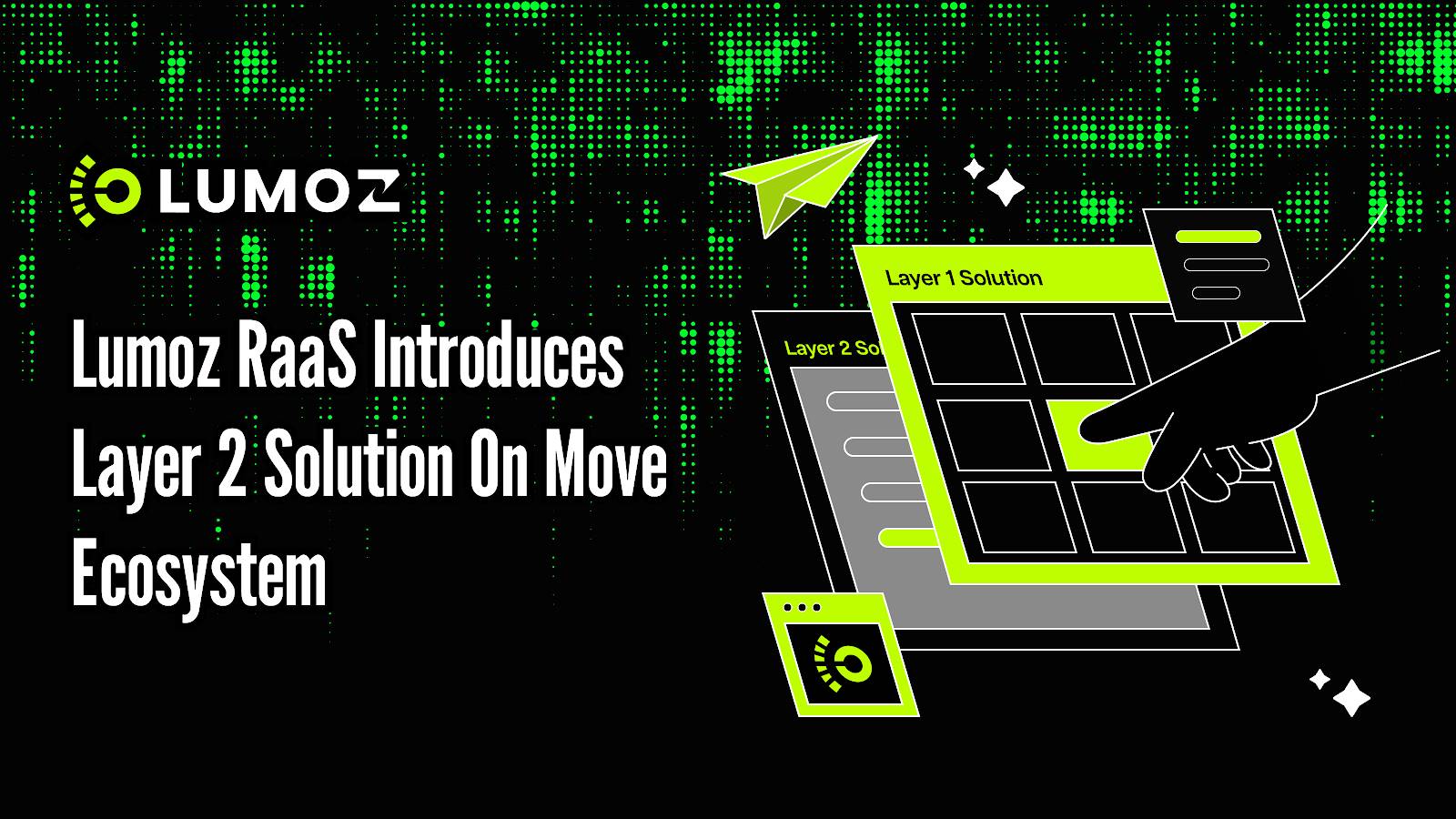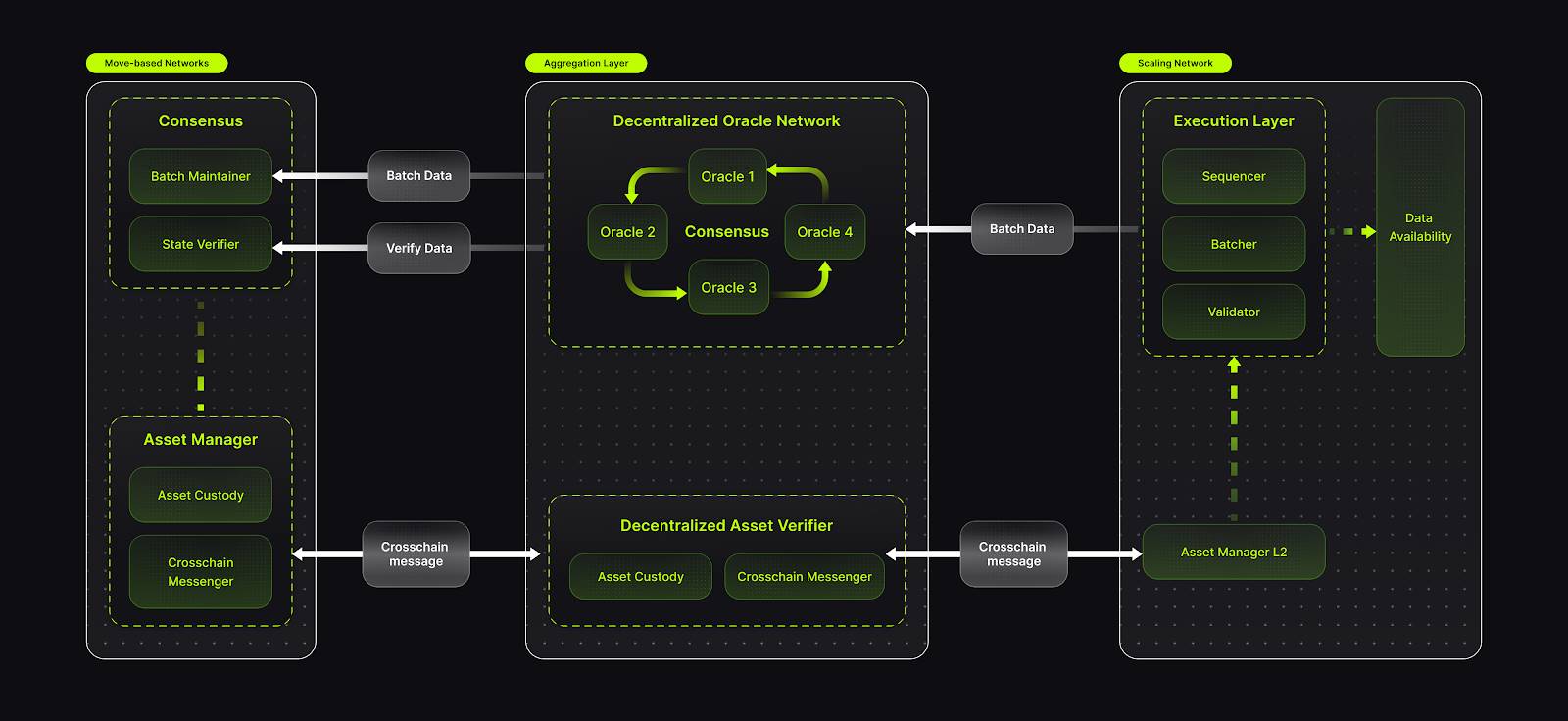The Lumoz RaaS framework will become an important driving force within the Move ecosystem.

Summary: By providing comprehensive EVM compatibility, Lumoz RaaS enables Ethereum projects to easily integrate into the Move ecosystem, such as Sui, Aptos, Movement, etc. The Lumoz RaaS solution not only facilitates cross-chain collaboration and unlocks new growth potential, reduces transaction costs, but also optimizes user experience, providing developers and enterprises with a seamless entry into the Move ecosystem.
Introduction
Lumoz's Rollup-as-a-Service (RaaS) has supported scalable Layer 2 networks within the Move ecosystem. This solution fully leverages the resource-oriented model of the Move programming language, enhancing security through a strict type system and ensuring precise management of assets and data. The integration of Rollup technology further ensures high-speed transaction processing, lower gas fees, and complete EVM compatibility, helping Ethereum projects seamlessly enter the Move ecosystem.
The three-layer modular architecture of Lumoz RaaS encompasses consensus contracts, data flow and validation of the aggregation layer, and state management of the execution module. This design ensures smooth cross-chain communication and provides users with an efficient and user-friendly transaction environment. While ensuring high performance, Lumoz enhances the interoperability and security of the Move ecosystem, helping developers and enterprises explore more new opportunities in Web3.
Advantages of Lumoz Solutions
As a Layer 2 network operating on the Move ecosystem, this solution can first take advantage of the characteristics of the Move language itself. Whether it is the MoveVM itself or the customized SuiVM or AptosVM based on it, they can utilize its resource-oriented programming model to provide greater flexibility and security for data and asset management on Layer 1 networks. This feature ensures that when the Layer 2 network operates on these Move ecosystem networks, the consensus contracts it relies on can safely and conveniently manage Layer 2 batch data and asset states, significantly reducing potential vulnerabilities during development.
The Rollup solution on which RaaS technology is based can also bring significant performance improvements to the Layer 2 network itself, including increased network throughput, faster transaction confirmations, lower on-chain interaction costs, and complete EVM compatibility. Additionally, the Rollup consensus mechanism, which has been validated in numerous scenarios, can seamlessly inherit the security of Layer 1 networks, providing strong security guarantees for Layer 2 networks.
Infrastructure of the Solution

Move-based Scaling Network Architecture
Lumoz will adopt a three-layer structure to provide scalability solutions for Layer 1 networks based on Move, including the following main layers:
Consensus and Asset Management contracts running on Layer 1 network. This part will utilize the features provided by the Move language, ensuring the security of assets and data in the extended network through a resource-oriented modular design.
Consensus: The core module includes a Batch Maintainer that manages Layer 2 batch data and a State Verifier that verifies the validity of the state. Only when the information stored in the Batch Maintainer is consistent with the state verification of the State Verifier will the contract consider the current Layer 2 state valid and perform the corresponding asset operations.
Asset Manager: Composed of Asset Custody, which actually manages assets, and Crosschain Messenger, which handles cross-chain states. When the Crosschain Messenger detects a cross-chain event, it will verify the validity of the cross-chain request in Consensus, and after verification, the Asset Custody will further process the asset state.
Aggregation Layer: As the intermediate layer connecting Layer 1 and Layer 2 networks, it is responsible for bilateral data and information interaction and inter-chain communication, laying the foundation for the security and interoperability of the extended network.
Decentralized Oracle Network: As a bridge for data and information, this layer ensures that the batch data and states submitted by the extended network can be confirmed by the Layer 1 network through independent network consensus, thereby improving the system's transparency and credibility.
Decentralization Asset Verify Layer: Verifies the flow of cross-chain communication, including assets, between Layer 1 and Layer 2 networks. Through mechanisms such as proposal and review processes, it checks the validity of cross-chain requests and network states to enhance the security and liquidity of transactions.
Extended Network: Composed of the execution module, cross-chain module, and data availability module included in the Rollup architecture, where
Execution Layer: As the direct entry point for transactions on the extended network, it is responsible for executing, processing, and packaging transaction data on the Layer 2 network and maintaining the network state. Batch data will ultimately be submitted to the Layer 1 network after packaging is completed and will undergo validity verification based on Rollup consensus.
Asset Manager L2: Corresponding to the Asset Manager of Layer 1 network, it will also initiate/process related cross-chain requests and update the asset state on the Layer 2 network based on the results of validity verification.
Data Availability: Stores the complete on-chain data produced by the execution layer, providing transparency and reliability for the network's data.
Through this three-layer architecture, Lumoz not only ensures high performance and security of the extended network but also achieves close integration with the Layer 1 network of Move, bringing users a more efficient scalability solution.
Conclusion
In the increasingly competitive blockchain market, scalability has become key. The Lumoz RaaS framework will become an important driving force within the Move ecosystem. With its high performance, security, and low-cost features, RaaS provides strong reasons for enterprises and developers to adopt Move Layer 2 solutions. By simplifying the transition between Ethereum and the Move ecosystem and promoting a seamless experience for cross-chain interactions, Lumoz is laying the foundation for the evolution of decentralized ecosystems.
The successful launch of Lumoz RaaS services in the Move ecosystem marks its continuous progress in both technical breadth and depth. Currently, this service supports multiple mainstream blockchain ecosystems, including BTC, ETH, SUI, and TON. Through this innovation, Lumoz is leading the cross-chain interoperability and scalability of blockchain networks, providing enterprises and developers with more efficient and secure solutions. This not only enhances the application capabilities of the Move ecosystem but also promotes the development of the Web3 ecosystem and the future of multi-chain collaboration.
免责声明:本文章仅代表作者个人观点,不代表本平台的立场和观点。本文章仅供信息分享,不构成对任何人的任何投资建议。用户与作者之间的任何争议,与本平台无关。如网页中刊载的文章或图片涉及侵权,请提供相关的权利证明和身份证明发送邮件到support@aicoin.com,本平台相关工作人员将会进行核查。




